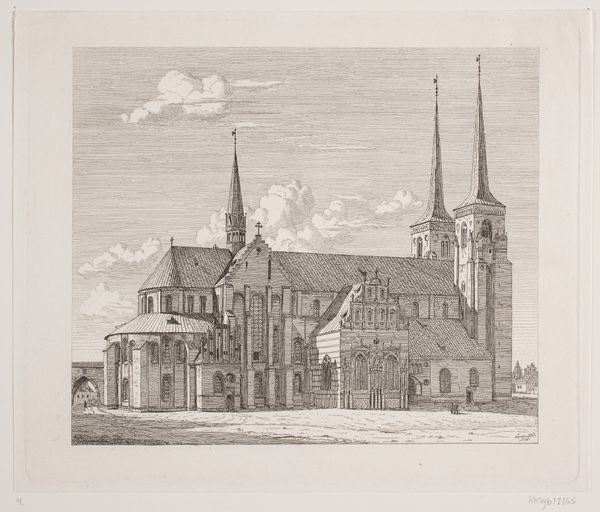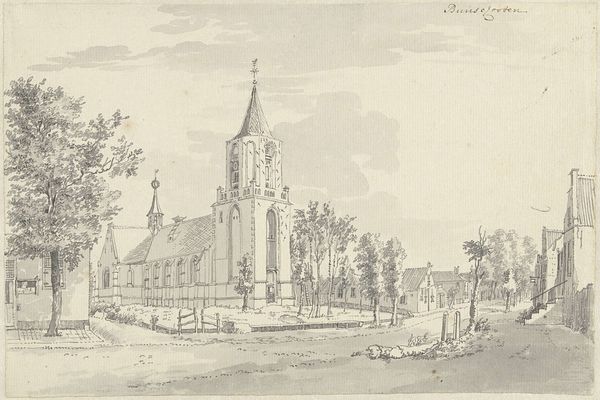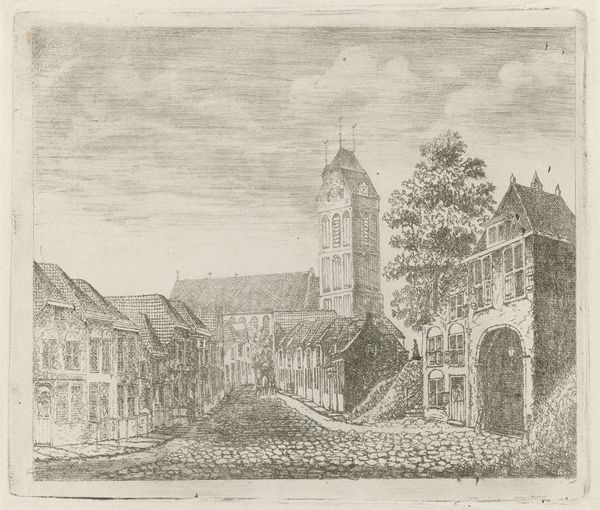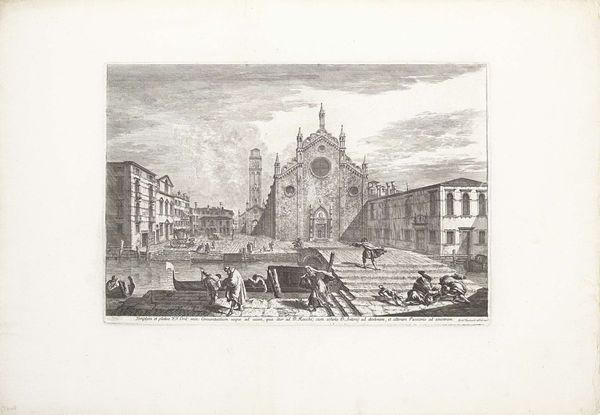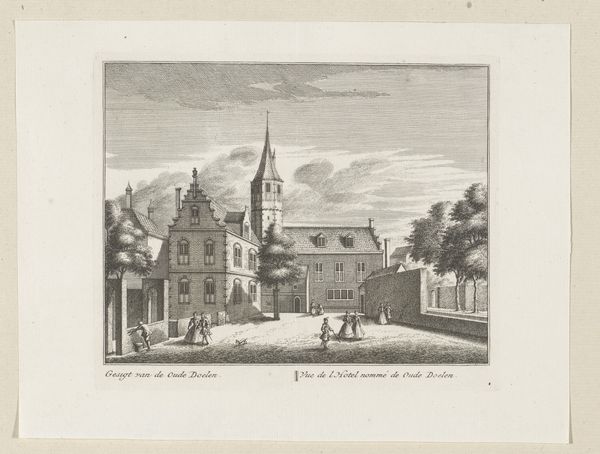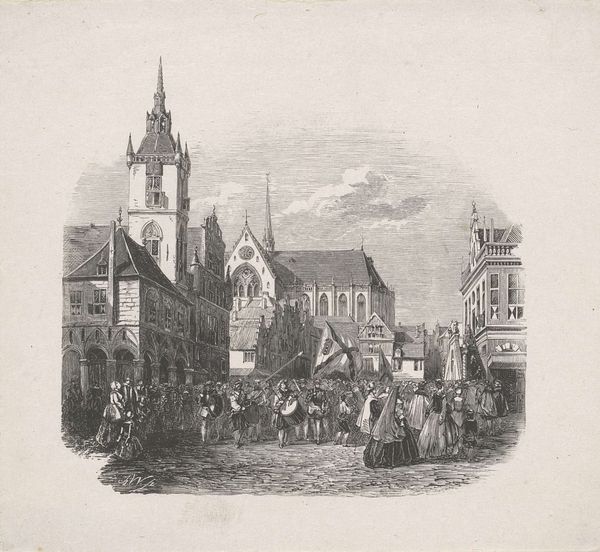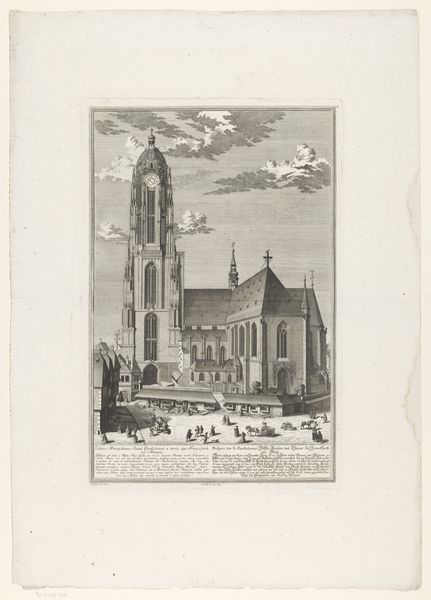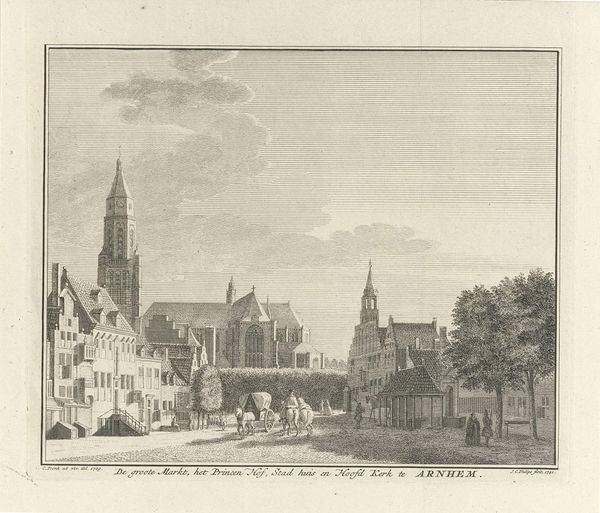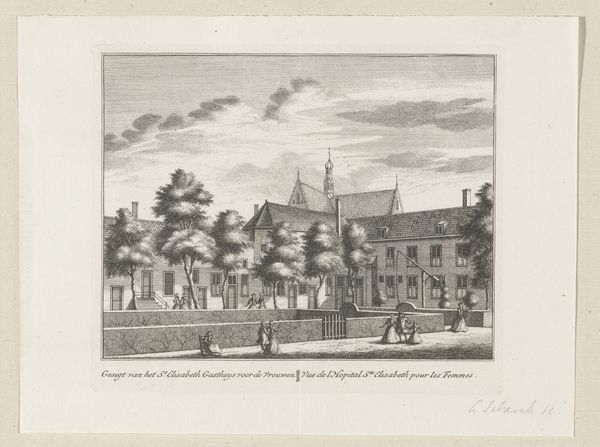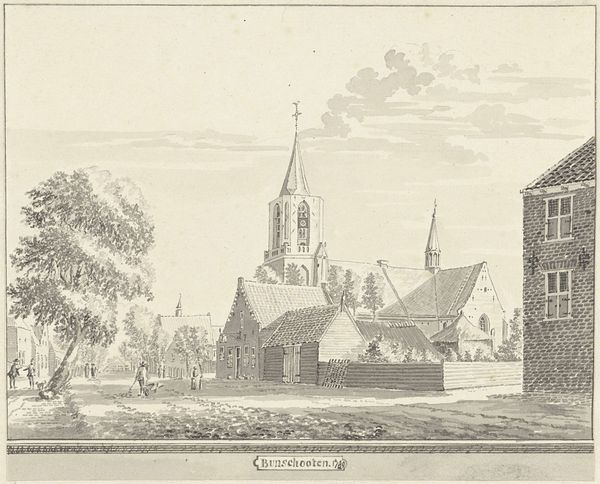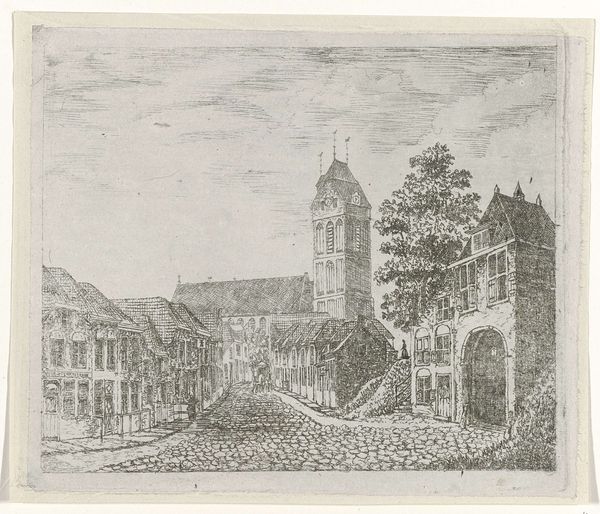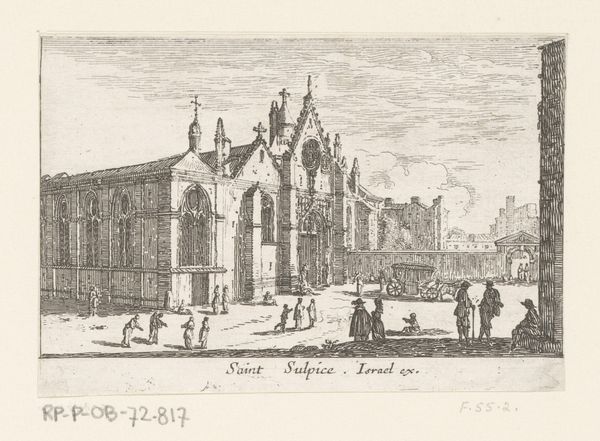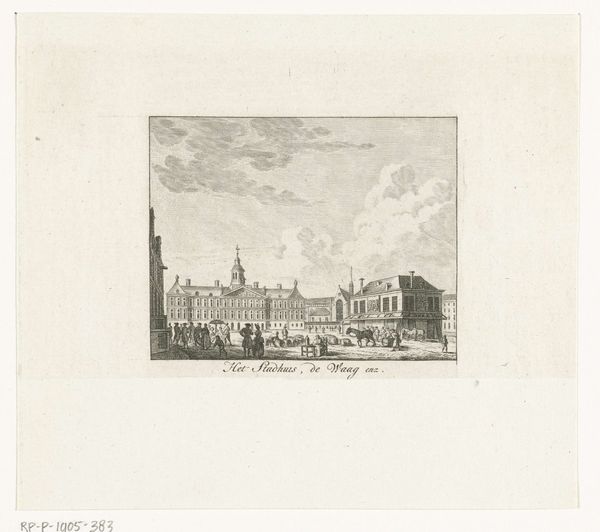
print, etching
#
pencil drawn
# print
#
etching
#
pencil sketch
#
old engraving style
#
landscape
#
cityscape
#
realism
Dimensions: height 125 mm, width 162 mm
Copyright: Rijks Museum: Open Domain
Curator: Ah, another quiet corner of the past. We have here a print titled "Gezicht op de Mariaplaats en de Mariakerk te Utrecht," depicting a view of Mariaplaats and the Mariakerk in Utrecht. It was made sometime between 1831 and 1886 by Frans Molenaar. What's your initial feeling? Editor: Bleak, isn't it? A stark depiction of societal power—that looming church dominating the scene, literally casting a shadow over everything else. It feels like a constant reminder of the church’s authority and influence. Curator: I can see that. But there's also something incredibly charming in its quietness. The details, etched so finely... it’s a testament to the etcher’s focus. Molenaar really captured the feel of the light hitting those aged stones. Makes you wonder about the people who walked those streets back then. Editor: Those 'people' you mention are quite faint, reduced to blurry figures! It emphasizes how power often erases individuality and agency. These buildings are the protagonists of their own narrative, while the people almost fade into them, nameless and unacknowledged in their own urban existence. Curator: Maybe. Or maybe he was just focused on the architecture! Artists have their fixations. But still, it's intriguing to think of Utrecht then, so seemingly unchanged for centuries, yet bubbling beneath the surface with the anxieties and social changes of the era. You see that in how empty it looks, even a place like the main square. A feeling I relate to very much. Editor: But this calculated emptiness itself feels symbolic. Did Molenaar intend to make us reflect upon a society built upon the repression of the individual? I see the lack of street commerce as more a deliberate act of marginalization, showcasing empty promises of liberation when really the population served as mere components to a larger, ecclesiastic purpose. Curator: See, that's why I love discussing art with you! You peel back these layers and make me rethink my whole read. Maybe the charm is a facade and what remains is… emptiness, indeed! And I thank the art (and you) for making me uncomfortable like that. Editor: Exactly! Sometimes, that uncomfortable feeling is exactly where the truth lies. And art has the transformative power to reveal just that.
Comments
No comments
Be the first to comment and join the conversation on the ultimate creative platform.
